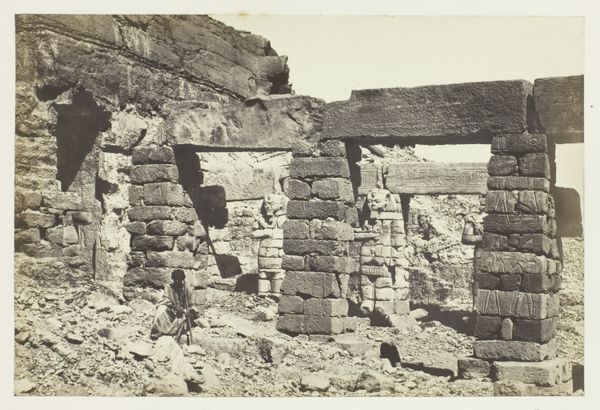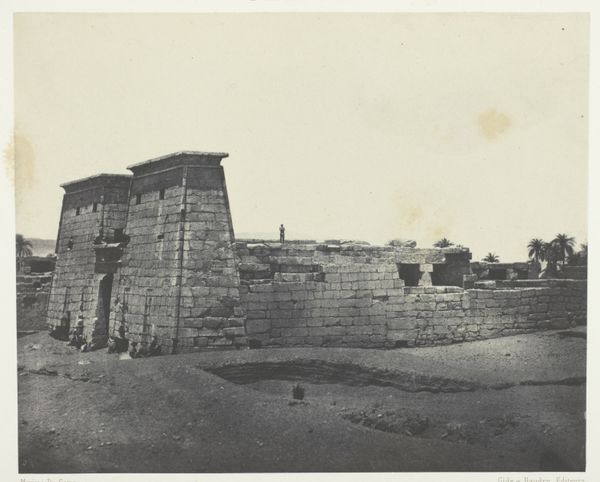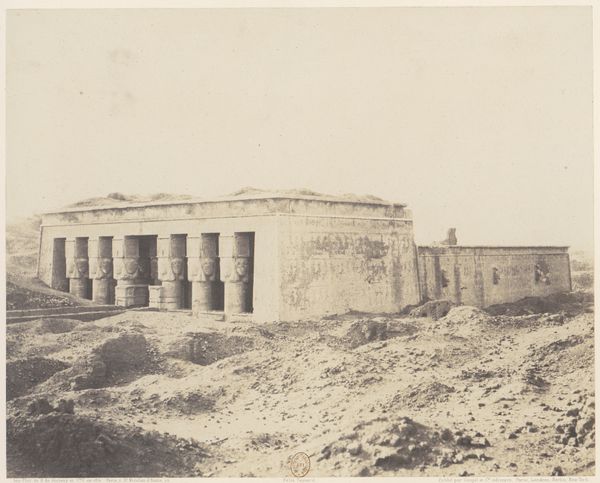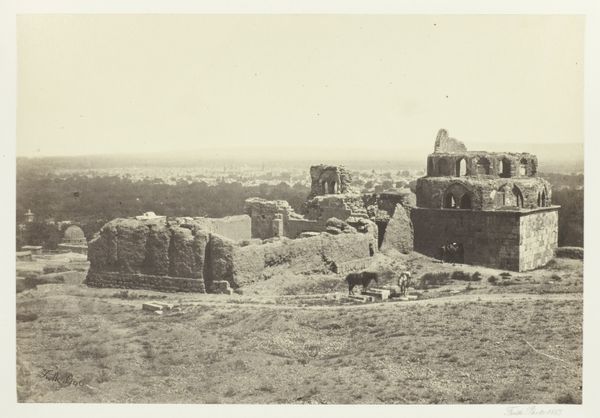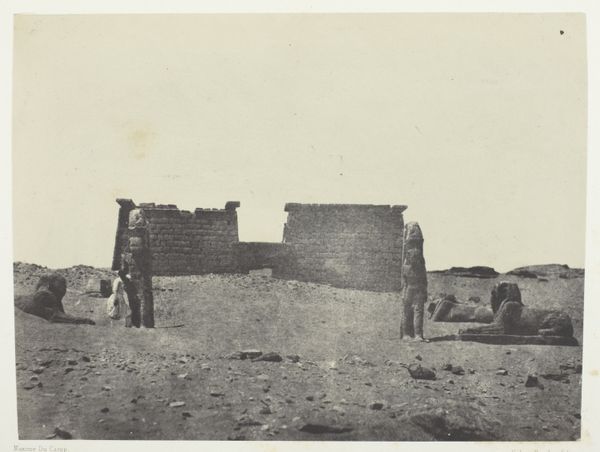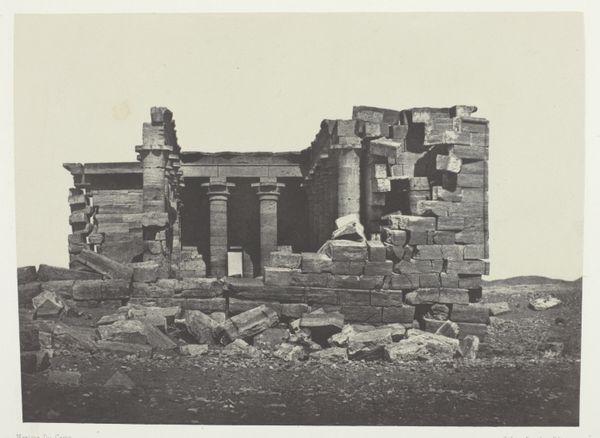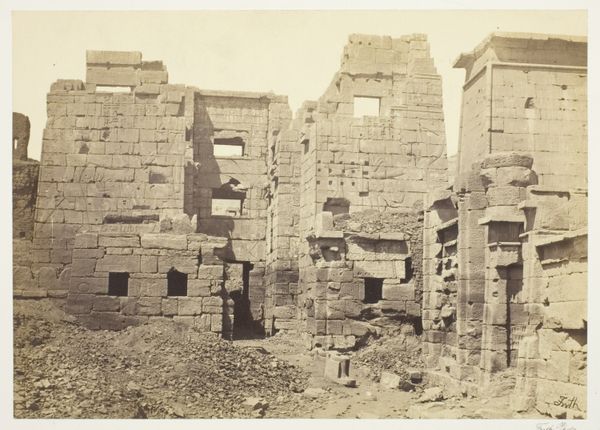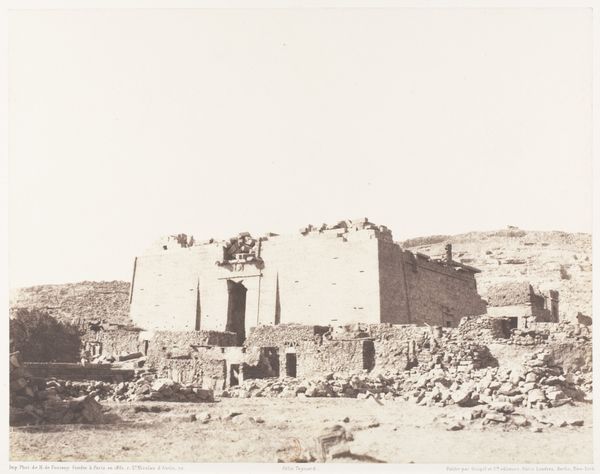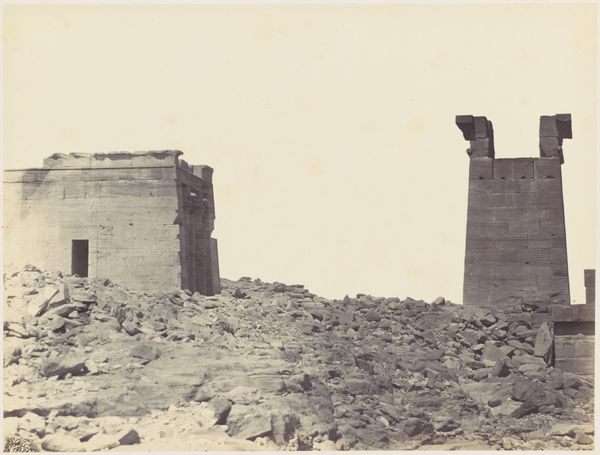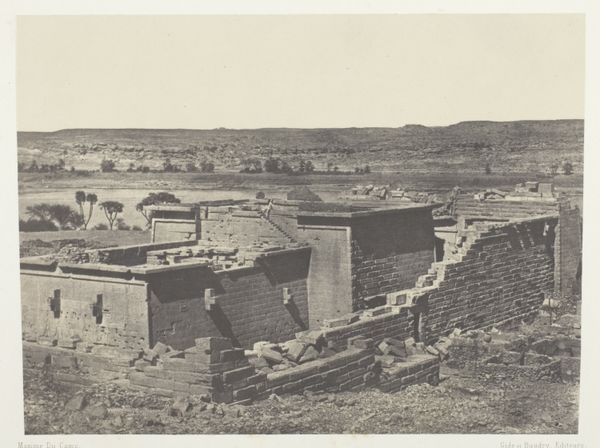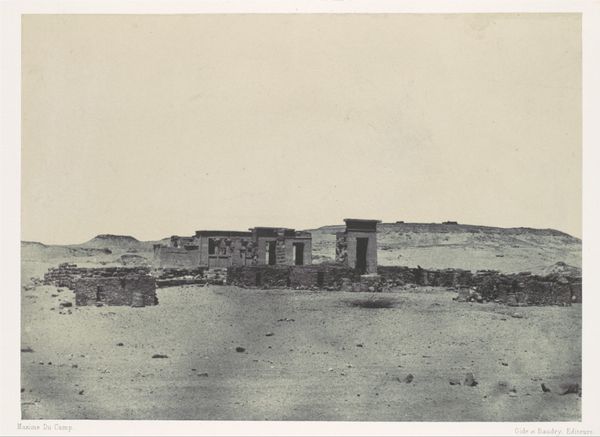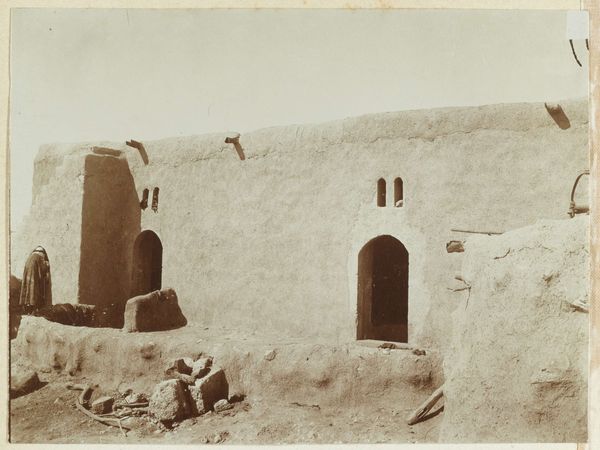
Palais de Karnak, Entrée Méridionale de la Salle Hypostyle; Thèbes Possibly 1849 - 1852
0:00
0:00
print, paper, photography, gelatin-silver-print
#
16_19th-century
# print
#
war
#
landscape
#
ancient-egyptian-art
#
outdoor photograph
#
paper
#
recolouration
#
negative
#
photography
#
egypt
#
ancient-mediterranean
#
gelatin-silver-print
#
france
#
history-painting
#
monochrome
Dimensions: 16.7 × 21.2 cm (image/paper); 30 × 42.8 cm (album page)
Copyright: Public Domain
Maxime Du Camp made this photograph of the Palais de Karnak in Thebes using the calotype process. A technique which used paper coated with silver iodide. Notice the texture rendered in the image. This process, though cutting edge for its time, was less sharp compared to other contemporary photographic methods that used glass plates. Look at the rough and granular forms of the stone blocks, each precisely hewn and stacked to form the imposing structure. Consider how the labor of countless individuals across generations built the temple complex, a testament to human ingenuity and the power structures of ancient Egypt. The image captures not only the grandeur of the architecture, but also hints at the passage of time, and the eventual decay that affects even the most monumental constructions. Du Camp's choice of the calotype process invites us to reflect on the intersections between art, technology, and the representation of history, moving us to appreciate the artistry in both the subject, and its means of production.
Comments
No comments
Be the first to comment and join the conversation on the ultimate creative platform.

